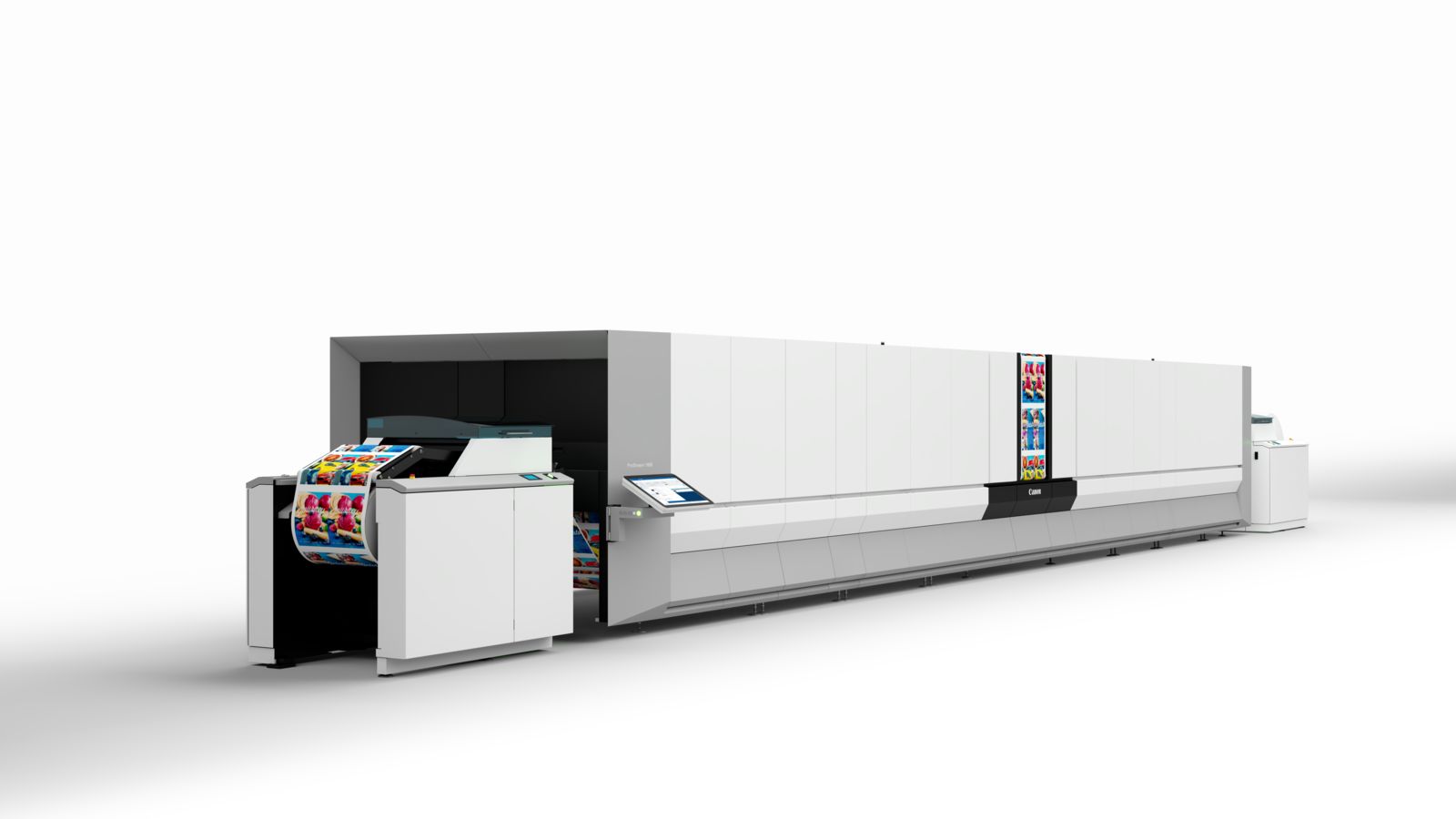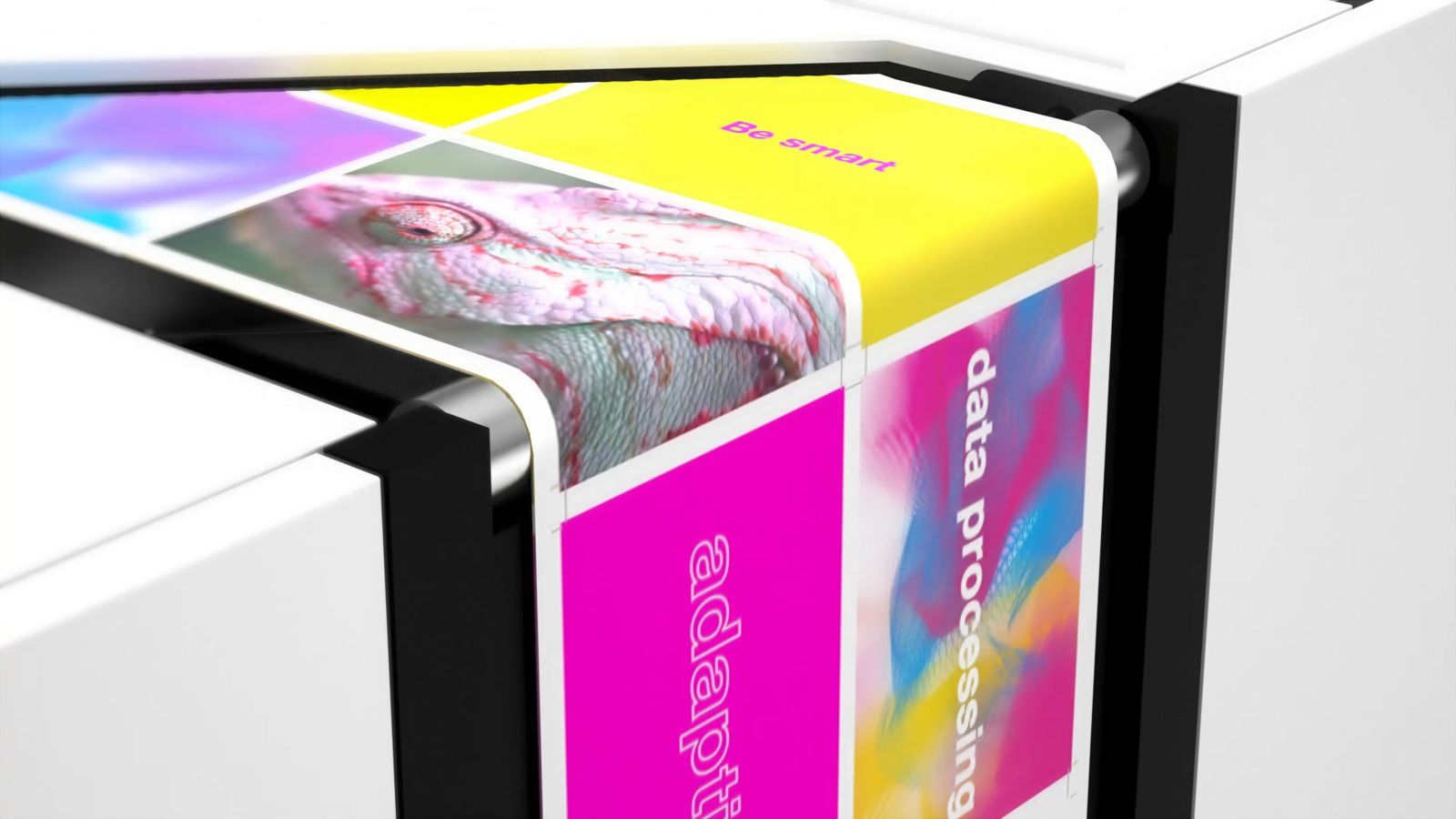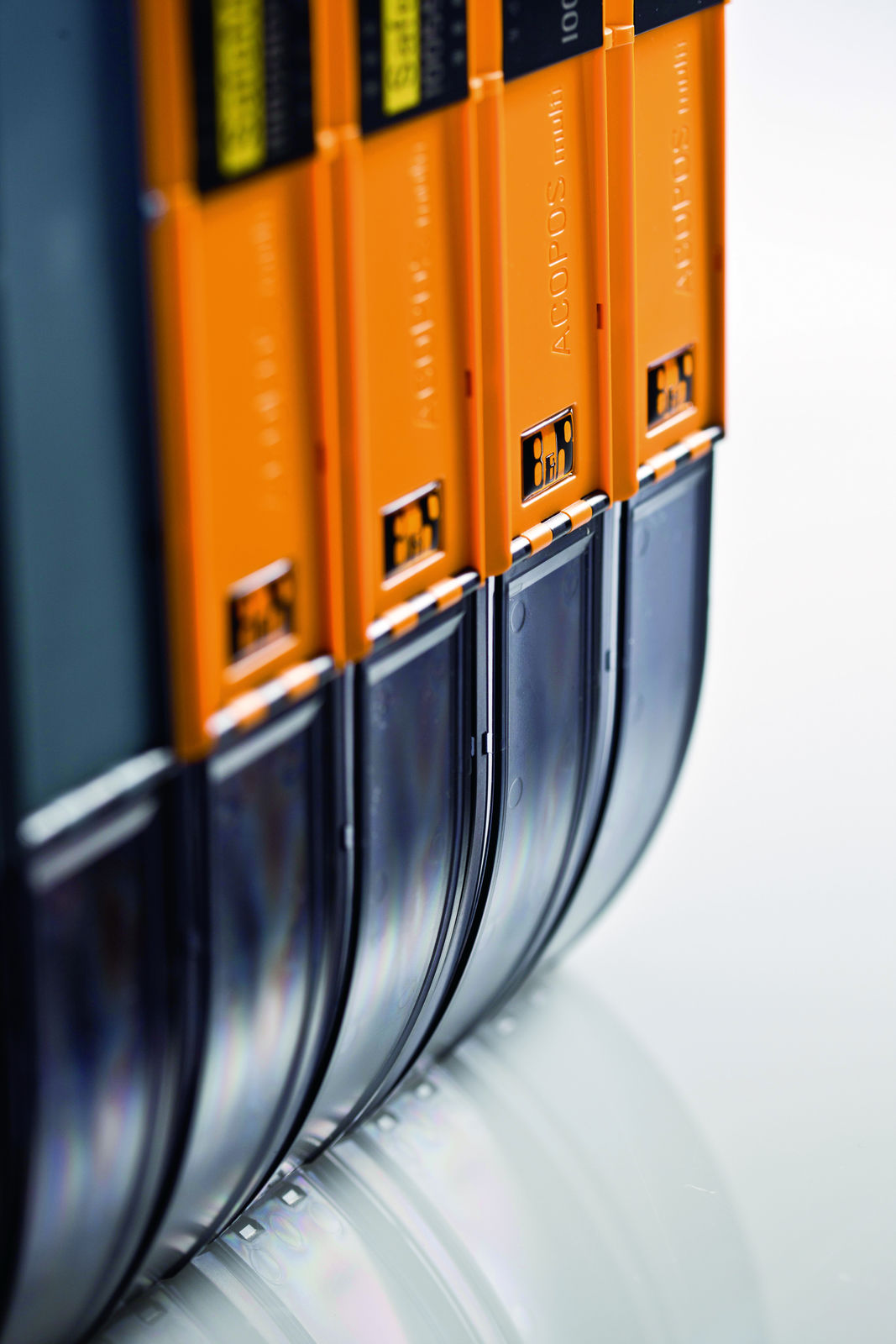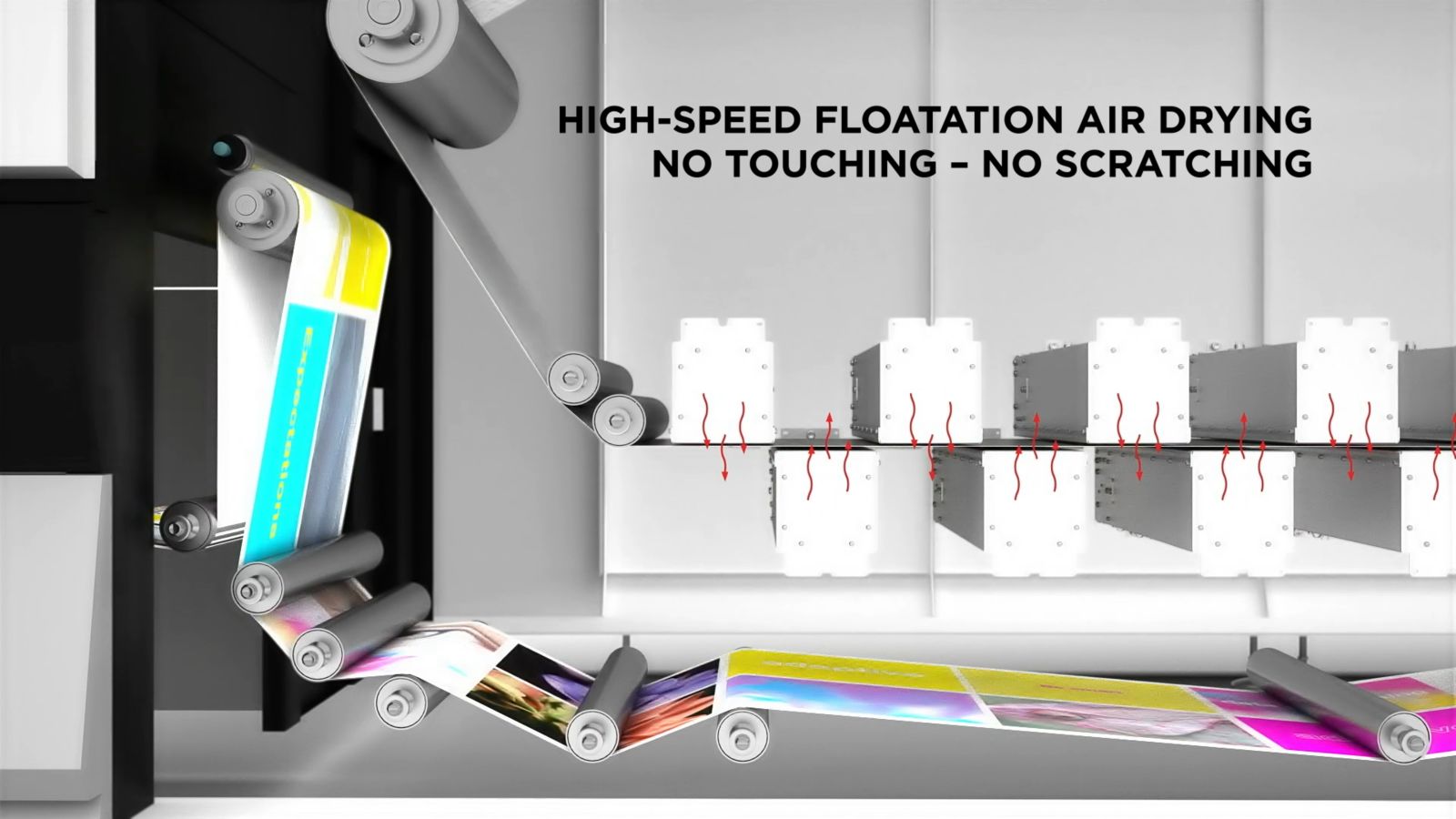What used to be the exclusive domain of offset printers is now possible with an inkjet printer: The Canon ProStream makes high-quality printing more flexible and profitable than traditionally possible with web offset printers. This revolution has been made possible by dynamic drives and a high-speed web control solution from B&R.

Glossy magazines, fine art prints and advertising brochures are as nice to handle as they are to look at. That's because they are made from paper that is coated with a mixture of pigments and binders and smoothed by rollers.
This surface-finished paper gives the printed products fine detail and brilliant color. It was designed and optimized for offset printing presses, though, and until now that has been the only option. Conventional inkjet printers cannot use coated paper, because the pigments in the ink don't adhere to its smooth surface and the printed image is easily smeared. As a result, inkjet printers have traditionally been relegated to use for printed products with lower quality requirements, where uncoated papers can be used. For high-quality production, only offset technology offered the necessary productivity and cost efficiency.
But with the new Canon ProStream, the rules are changing. With its new polymer-based ink technology and optimized non-contact air drying, Canon's latest printer is the first web inkjet system able to print on virtually any glossy, silk or matt coated paper – delivering quality and productivity equal to or better than offset printing.
Inkjet has one other key advantage over offset: As a purely digital printing process, it can produce completely variable images without having to set up the machine for each new print job like with an offset printer. With inkjet, even the shortest runs become profitable and can be processed quickly. This opens up flexible new business models that prepare printing companies for a future where services like print-on-demand and product personalization are transforming the way we use printed products for advertising and communication.
Same level of print quality and productivity
Printer specialist Canon, based in Japan and with R&D and production in Poing near Munich, challenged itself to create a digital printing system able to match the quality and productivity of offset printing. The result was the ProStream printer, introduced in 2017. Designed from the ground up for digital web printing, this inkjet system can print on a wide range of materials – including coated paper. The Canon ProStream meets the quality requirements of the "Process Standard Offset Printing" with an effective monthly print output of up to 35 million A4 pages. Unlike the offset process, however, it can print variable data, which enables it to produce short runs or personalized products as cost-effectively as a full-scale industrial campaign.
To meet this requirement profile, the Canon developers had to dig deep into their proverbial toolbox. In addition to a novel polymer ink technology and an optimized no-contact air drying system, the solution also makes use of state-of-the-art print heads and a high-performance web control system.

It was also the first member of the Canon portfolio to feature a B&R hardware platform for web control. The B&R system controls five servo motors, which drive the rollers that maintain the required web tension as they move the paper through the machine. One of the most difficult challenges to solve when working with coated paper is web tension control, due to the smooth surface.

B&R selected as motion control partner
"Before the project started, we defined a comprehensive requirements profile for the drive system and put a select group of candidates through their paces," explains Sebastian Karrer, international product manager at Canon Production Printing in Poing. "After that, there was no doubt that B&R would be the right technology partner for us." In consultation with B&R experts, the printer specialist selected servo drives from the ACOPOSmulti series and a PLC from the X20 system. In combination with B&R servo motors, this formed a motion control solution for the ProStream that enabled the engineers to achieve the high levels of precision, responsiveness and consistency that underpin the ProStream's high print quality.
For web tension control, the programmers selected a standard PI control function from the B&R library. "After exploring various potential approaches with B&R's experts, we decided for the PLCopen variant. It offers us the most freedom in how we set up the controller," recalls Johann Bartosch, control software developer at Canon Production Printing.

Full control for the user
"The openness of B&R's technology lines up well with our own philosophy, and was a strong argument in their favor," adds Karrer. "They showed us a variety of options and helped us build up the know-how we need to work with the solution we selected and continue to develop it further."
For example, Canon was able to easily transfer alarms – provided by the B&R drive system in XML format – to the alarm system of the printer control unit. The high level of integration offered by B&R systems also helped save valuable engineering time and allowed Canon to concentrate on the essentials. "Values from the safety controller and the safe I/Os are automatically available in B&R's universal engineering environment, Automation Studio," notes Bartosch. "Our past experience with other providers has been that the software landscape is much more fragmented, which means more work for us."
Less risk, lower costs
By using B&R safety technology, Canon hoped to achieve the Machinery Directive conformity required for web printing machines like the ProStream with a manageable amount of effort. This has been confirmed in practice, as the software expert reports: "The simple fact that we use B&R safety technology was enough to get us off on the right foot with the inspector from the occupational safety association. He was immediately confident that the conformity assessment would run smoothly. And it turned out he was right."
One of the ways Canon uses B&R's integrated safety technology is to keep flammable vapors, such as those that occur during drying, at a non-critical level. This is done using fans run by induction motors, which are controlled by ACOPOSmulti drives operating in frequency inverter mode rather than using dedicated inverters. By eliminating the need for an additional device type, this simplifies spare parts stocking and procurement. As a result, the total cost of the ProStream is lower, despite the higher purchase price for the servo drives.

Spare parts inventory is further simplified by B&R's highly reliable delivery. "Since the first ProStream in November 2017, we've been measuring B&R's delivery performance – as we do with all our suppliers. At 100%, they stand out clearly above the competition. That's a particularly important factor for us, because with a machine like the ProStream we serve about 90% of the entire print market, so we anticipate high demand," says a very satisfied Karrer.
Author: Franz Rossmann, technology journalist from near Munich
 | Sebastian Karrer International Product Manager, Canon Production Printing "With 100% reliable delivery, B&R stands out clearly above the competition." |